READY TO GET STARTED?
REQUEST A FREE ESTIMATE
Fill out the form below or call (888) 466-7849 for a free, no-obligation estimate.
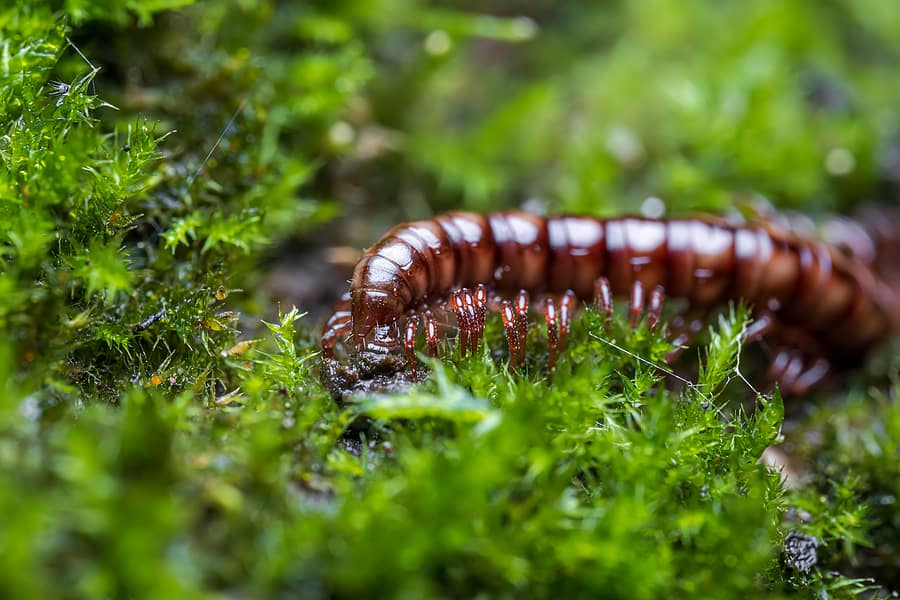
Centipedes and millipedes are two common household pests that are often mistaken for each other. How can you tell them apart? How can you tell if they’ve infested your home? Learn the difference between centipedes and millipedes, along with tips to prevent both of them from taking over your home.

Centipedes have elongated, flat, segmented bodies with 1 pair of legs per segment. They can have anywhere from 15 to 177 pairs of legs. They have long antennae on their heads, as well. They can come in a variety of colors but the most common species are either brown or reddish-orange. These pests are attracted to damp, dark areas like basements, bathrooms, and closets.
Centipedes are nocturnal and can move very fast, making them hard to spot by homeowners. In fact, the only real sign of centipedes in your home is spotting live pests.
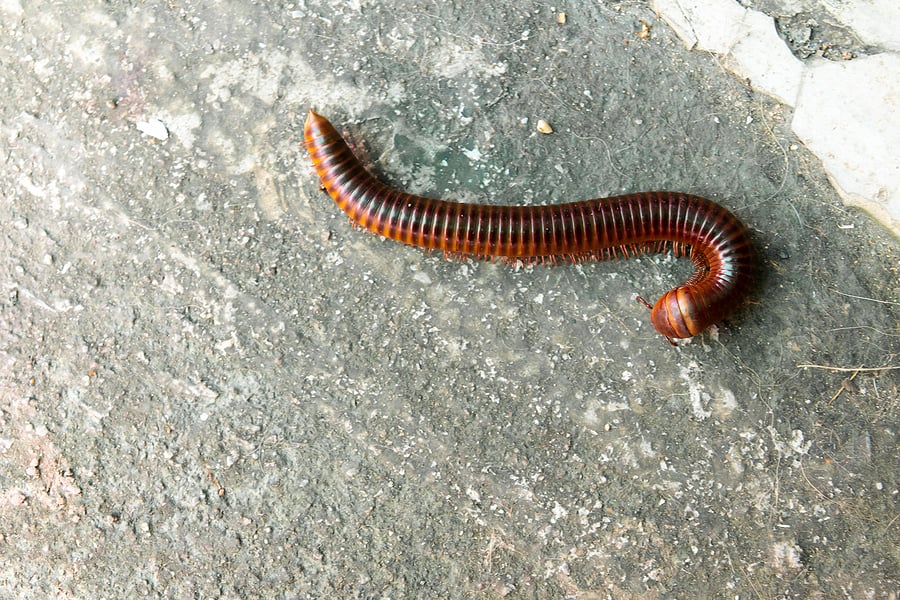
Millipedes have long, cylindrical bodies with 2 rows of legs on their bodies and 1 row of legs on the front of their bodies. They grow to about 1 to 2 inches in length. These pests will curl into a ball when touched or threatened. They prefer dark, damp spaces and are often found under wood piles, under rocks, and under trashcans. When they come indoors, they can often be found in attics, basements, sheds, and crawlspaces. These pests eat damp and decaying wood particles and plants.
Millipedes are also nocturnal so spotting them can be difficult. Signs of millipedes include seeing live pests in your home and signs of structural damage. These pests will eat damp or decaying wood so look out for damage to firewood, cardboard boxes, etc.
Although centipedes and millipedes don’t pose a significant threat to humans or homes, they can be a nuisance to have around. Routine pest control can help keep these, and other common household pests, from taking over your home. Contact your local pest control company for an inspection.
How to Identify Stinging Pests in the Southeast
How To Avoid Mosquito Bites this Summer
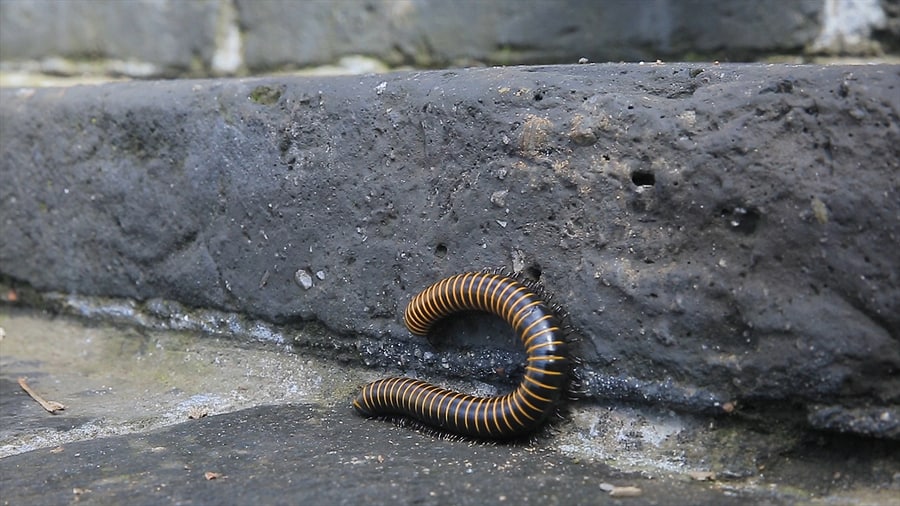
Millipedes are common household pests that are brownish-black in color and that can grow to about an inch in length. Also known as “thousand-leggers,” these pests don’t actually have 1000 legs. They do, however, have 2 pairs of very short legs on each segment of their body. They are often confused with centipedes which only have 1 pair of legs per body segment. Millipedes crawl slowly and will curl into a “c” shape and remain motionless when they are disturbed. They can also secrete an unpleasant smelling odor.
Millipedes overwinter as adults and lay their eggs in the spring. They can live for several years. They are scavengers, eating primarily decomposing vegetation. They are attracted to cool, dark, moist environments (like compost piles, flower beds, mulch, rotting logs, and under rocks and logs). When the weather is hot and dry or there is an overabundance of water, they will emerge and make their way into your home in search of moisture or shelter. They can infest in large numbers but they don’t bite, sting, transmit diseases, infest food, clothing, or even dry wood.
Millipedes will come indoors for a variety of reasons. When the weather is hot and dry, they will invade your home in search of moisture. When conditions are extremely wet they will be forced to higher ground (e.g. concrete slabs, foundations, and siding). In the fall they migrate in search of places to overwinter. In these conditions, they will make their way into your home through door thresholds (especially garage and sliding glass doors), through expansion joints, and through voids in concrete block walls. Millipedes cannot survive indoors more than a day or two.
Now that you know more about millipedes and what attracts them to your home, what can you do to keep them from infesting your personal space?
Chemical treatments indoors are usually not very effective against millipedes. If you have them inside just sweep or vacuum them up and dispose of them. Chemical treatments outdoors can help keep them from crossing the threshold inside. If you have a problem with millipedes, consider calling a professional pest control company for an evaluation and treatment plan.
How To Keep Wildlife Out of Your Yard
How Common is the American Cockroach?
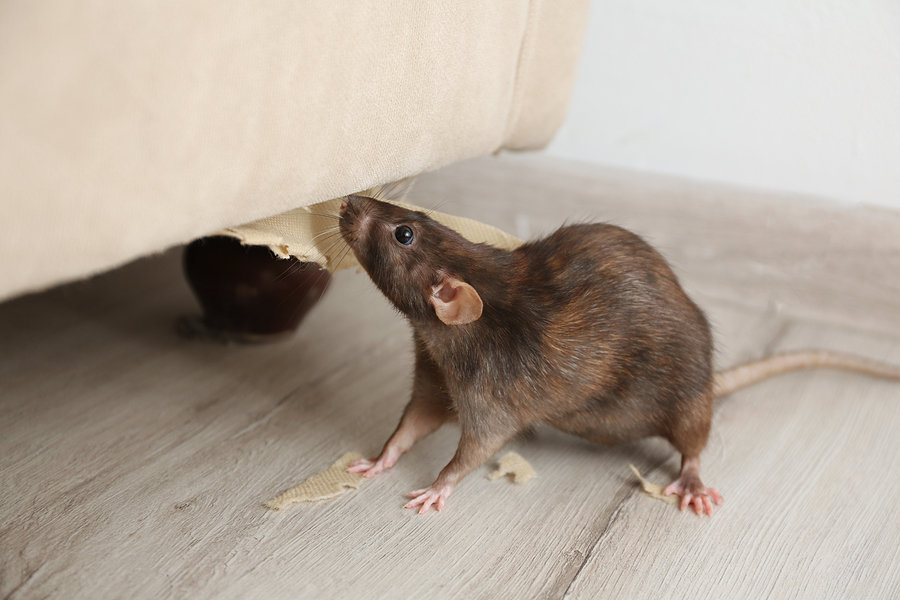
The last thing any homeowner wants to deal with is pests. A household pest is any insect or animal that is commonly found in a household structure that can cause destruction to the property or to your health. While the occasional critter can make its way inside, routine occurrences indicates the likelihood of an infestation. Fortunately there are some DIY pest control tips you can use at home to help prevent these pests from taking over. Here are a few of the most common household pests and how to prevent them.

Most ants don’t cause any structural damage to your home (with the exception of carpenter ants). They are, however, the #1 nuisance pest in the United States. Ants are difficult to control because their colonies are so large. These pests typically come indoors in search of food and water and can usually be found near these sources in your home – especially in kitchens and bathrooms. Prevent ants by:

Birds are not usually considered nuisance pests but their nests can obstruct common areas of your home and their droppings can contaminate or damage other areas. Birds usually enter your home in search of food and shelter. Prevent birds by:

Cockroaches are dangerous to humans as they are known to carry serious diseases and trigger both allergies and asthma. These pests multiply quickly, making them very difficult to control. Roaches will come into homes in search of food, water, and shelter, with them often found in kitchens, bathrooms, and laundry rooms. Prevent roaches by:

Termites are known as silent destroyers, eating wood from the inside out and going undetected for long periods of time. Common signs of termites include swarms; mud tubes; discarded wings; discolored drywall; peeling paint; wood with a hollow sound when tapped; squeaky floorboards; doors and windows that stick; damaged wood; loose tiles; and buckling floors. Prevent termites by:
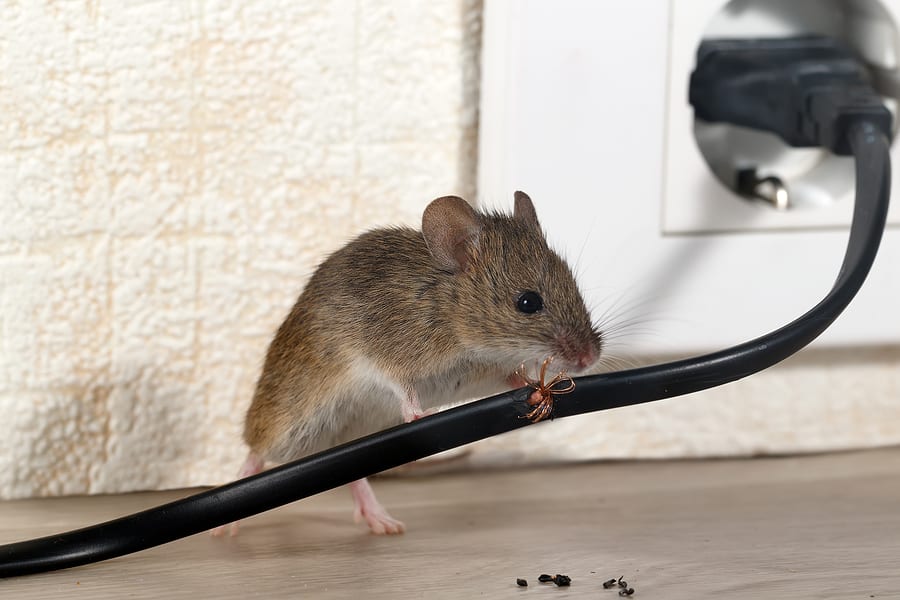
Rodents are common household pests and include rats, mice, squirrels, and raccoons. Rodents can cause significant damage to your property by chewing through electrical wires and insulation. They can also contaminate food and spread disease. Prevent rodents by:
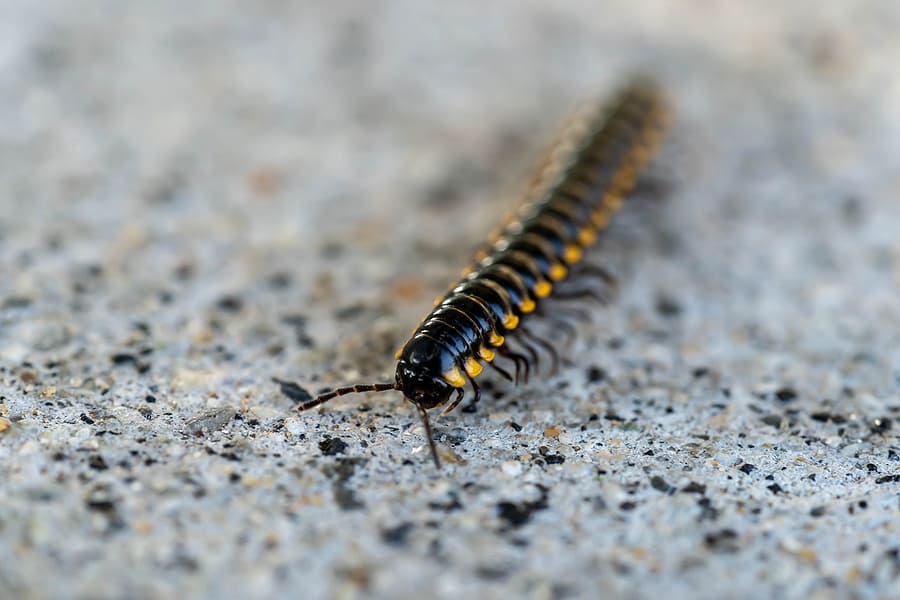
Centipedes are arthropods with 14 or more body segments and one pair of legs per segment. Millipedes are also arthropods but they have 2 pairs of legs on their body segments. Neither of these pests are considered dangerous and don’t cause damage or spread disease. They can, however, be annoying if they infest in large numbers. Both of these pests thrive in moisture-rich environments. Prevent centipedes and millipedes by:
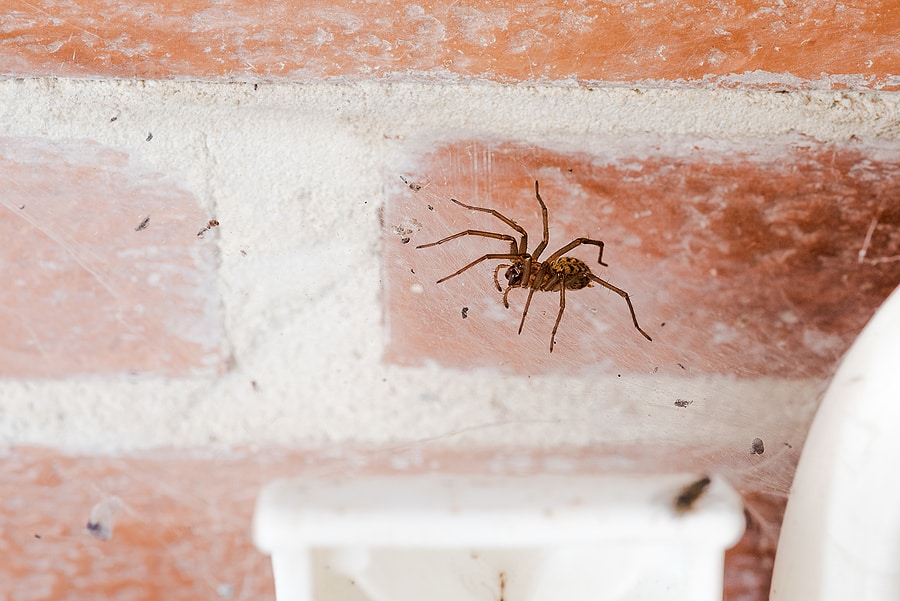
Although there are a few venomous spider species in our area, most spiders that make their way into your home are harmless (and even beneficial by eating other pests)! Prevent spiders by:
The key to household pest control is prevention. By taking these steps early, you can head off an infestation before it starts. If you have a problem with any household pests, contact your local pest control company for a free evaluation and comprehensive treatment plan.

Although they are often confused with each other, millipedes and centipedes are two completely different pests. While both are classified as arthropods, the similarities end there. Which one is more dangerous to humans – millipede vs centipede?
Centipedes have bodies composed of many segments with one pair of legs on each segment. These long legs extend from the sides of their bodies and trail backwards behind them, making them very visible. These legs enable centipedes to move very quickly. They also have long antenna. Centipedes do have the capability to bite and are classified as predators, killing and eating their prey.
Millipedes, on the other hand, are the opposite. These arthropods have only 1 pair of legs on their first 3 body segments but then two pairs of legs for each body segment after those. Their legs are shorter and do not trail behind their bodies like centipedes do. These shorter legs make millipedes move much slower than their long-legged counterparts. Millipedes are also unable to bite. They are scavengers and do not kill prey to feed.
So which one is more dangerous? When millipedes are disturbed they will curl into a tight ball similar to a pill bug or “roly poly.” Since they are unable to bite, they emit a foul-smelling fluid that can cause irritation to the skin and eyes of humans if handled. Centipedes, on the other hand, will bite humans on occasion if they are disturbed. A centipede bite is similar to that of a bee sting, leaving behind a red bump that can swell, itch or sting. Despite these defensive mechanisms, neither millipedes nor centipedes are considered dangerous to humans or pets. Neither of these pests are known to transmit diseases or contaminate food, furniture, or plants either.
Although they aren’t considered harmful to humans, we still tend to be a little leery of their presence. You can prevent millipedes and centipedes by:
If you have a problem with millipedes or centipedes, contact your local pest control company who can help identify which of these pests you have, as well as help identify how they are getting into your home and the best method to eliminate them and prevent them from returning.
Avoiding Stinging Pests at Your Business
Controlling Birds During the Summer Months

Millipedes are common pests that can be found just about anywhere in the United States. Most of the time they can be found outside under leaves, mulch, compost, and rocks, although occasionally they will come indoors – in search of water during droughts or in search of shelter after heavy rains. They can usually be found infesting basements, garages, and crawlspaces. If you find a millipede in your home, there’s a good chance they are breeding somewhere on your lawn.
Millipedes are decomposers with their diet primarily consisting of damp, decaying plant material. Because of this, they are quite beneficial to have in your garden. Millipedes are harmless to humans but they can become a nuisance if they are present in large numbers. Prevention is the best start to millipede control. Keep millipedes away from your home with these millipede prevention tips.
What attracts millipedes is moisture, especially in crawlspaces and around foundations. Keep gutters clear and in good repair. Consider installing gutter guards to help prevent clogs. Make sure downspouts are pointed away from foundations and use splash blocks to keep water away from foundation walls. Consider installing tiles or drains or sloping the ground so water drains away from foundations. Repair any leaky pipes, appliances, or faucets. Reduce the humidity in your crawlspace and basement with dehumidifiers, sump pumps, or soil covers.
If there is nowhere for millipedes to breed or hide, they can’t get into your home. Keep millipedes out by removing mulch, leaves, grass clippings, boards, woodpiles, rocks, boxes, etc. from your yard, especially if they are near foundations. If you are unable to remove them completely, try to elevate them off the ground. Try not to overmulch your flowerbeds.
Millipedes thrive in the moist layer of thatch that can accumulate on lawns. Keep your grass mowed short and dethatch the lawn as this will make it less appealing to millipedes. Try not to overwater your lawn. Don’t water at night since there is no sun to help evaporate the moisture.
Millipedes can get into your home through cracks in the exterior. Seal any cracks or openings in the outside foundation. Use thresholds or door sweeps on all exterior doors. Caulk the outer edges of the thresholds. Seal any expansion joints where sunrooms, patios, and sidewalks are next to foundations. Seal any expansion joints or gaps at the bottom of basement walls.
Millipedes can only survive for a few days once they get inside your home. The conditions indoors are too dry for them to be able to live long periods of time. The infestation will be short lived and eventually they will die off. Once this happens, you can sweep them up with a broom or vacuum them up.
While millipedes don’t cause damage to homes and aren’t harmful to humans, they can become quite a nuisance when they infest in large numbers. If you have a problem with millipedes or any other pests, contact a professional pest control company who can provide you with the most up-to-date prevention and treatment techniques.
What to Know About Fleas & Ticks
Commercial Mosquito Control: A No Spray Way for Your Business
Carpenter Ants: The Silent Destroyers
Make Checking The Bed Bug Registry Part of Your Spring Break Plans